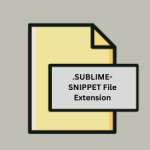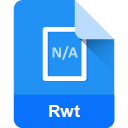.FRF File Extension

Free Report Form File
| Developer | Fast Reports |
| Popularity | |
| Category | Page Layout Files |
| Format | .FRF |
| Cross Platform | Update Soon |
What is an FRF file?
.FRF file extension is associated with Free Report Form files, commonly used in the realm of software applications for reporting purposes.
These files are instrumental in generating customizable reports based on data stored within databases or other data repositories.
Understanding the origins, technical specifications, and applications of .FRF files provides insight into their utility across various industries.
More Information.
Developed to address the limitations of static reporting formats, .FRF files enable users to create reports that adapt to changing data conditions.
Historically, they were introduced as part of database management systems (DBMS) and business intelligence (BI) tools in the late 20th century.
Their primary purpose was to facilitate the generation of customizable reports that could aggregate, summarize, and present data from multiple sources in a structured format.
Origin Of This File.
The .FRF file format emerged as a solution for businesses and software developers seeking efficient ways to produce dynamic reports from structured data.
It is closely tied to database management systems and reporting tools that allow users to design and generate reports tailored to specific needs.
Initially conceptualized to streamline reporting processes, .FRF files have evolved to support a wide array of reporting functionalities across different software platforms.
File Structure Technical Specification.
.FRF files are structured to store report layouts, data connections, formatting instructions, and parameters for generating reports dynamically.
They often include metadata describing the structure of the report, such as headers, footers, data fields, and sorting criteria.
The files can incorporate scripting or markup languages to define report elements and interactions, ensuring flexibility in report design and output.
Technical specifications may vary depending on the software application generated or using .FRF files.
Common elements include XML-based structures or proprietary formats that outline report components and their relationships with underlying data sources.
How to Convert the File?
Converting .FRF files to other formats typically involve exporting them from the originating software application in a compatible format.
Depending on the tool used to create the .FRF file, options for conversion may include:
- Export to PDF: Convert .FRF reports to Portable Document Format (PDF) for easy distribution and viewing.
- Export to CSV: Extract data from .FRF files into Comma-Separated Values (CSV) format for further analysis or import into spreadsheet applications.
- Export to HTML: Convert .FRF reports to Hypertext Markup Language (HTML) for web-based publishing or online viewing.
Conversion methods vary based on the software’s capabilities and user preferences, ensuring flexibility in how reports are shared and utilized.
Advantages And Disadvantages.
Advantages:
- Customizability: Users can tailor reports to specific requirements, adjusting layouts, data fields, and visual elements.
- Automation: Reporting tools can automate the generation and distribution of reports based on predefined schedules or events.
- Integration: .FRF files integrate seamlessly with database systems and enterprise software, enhancing data analytics and decision-making processes.
- Scalability: They support large datasets and complex reporting needs, making them suitable for enterprise-level applications.
Disadvantages:
- Compatibility Issues: Different versions of .FRF files may not be compatible across all reporting tools or software versions.
- Learning Curve: Designing and configuring .FRF files require familiarity with specific reporting tools or scripting languages, which can pose a learning curve.
- Maintenance: Updates or changes to data structures may necessitate adjustments to .FRF files, impacting report accuracy and functionality.
How to Open FRF?
Open In Windows
- Use popular reporting tools like Crystal Reports, Microsoft Access, or other DBMS-specific software that supports .FRF file formats.
Open In Linux
- Similar to MacOS, employ virtualization solutions or cross-platform reporting tools compatible with Linux distributions.
Open In MAC
- Utilize virtualization software to run Windows-based reporting tools, or use cross-platform reporting applications with MacOS support.













